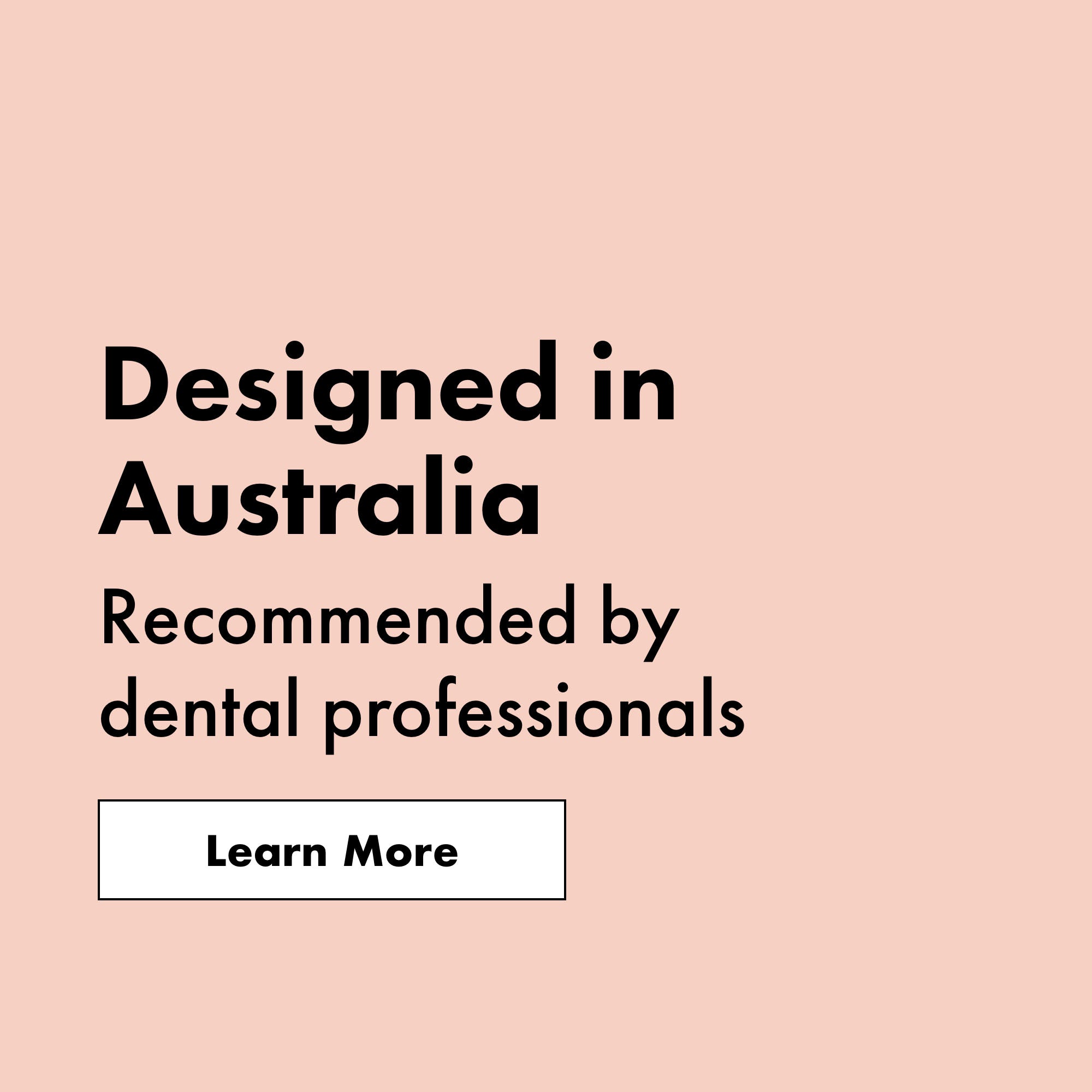
How to keep your smile looking it’s best at home
Keeping your smile looking its best is as simple as brushing, flossing and rinsing, combined with eating a healthy diet.
When your smile isn't looking its best, there can be a few reasons for this. While regular appointments with your dentist are essential, you can also do many things at home to improve and maintain a beautiful smile. Read on to learn how to brush for maximum effectiveness, floss properly, mouthwash with a superior solution, and what to avoid eating if you want your smile to remain radiant. By following this short guide, you should be able to keep your smile looking its best in between appointments.
Step 1: Brush your teeth twice a day with a fluoride toothpaste
Using your toothbrush morning and night is the first step to having excellent oral health. Here are our top tips for brushing to ensure you're keeping your teeth and gums healthy.
How to brush:
- Hold the toothbrush at a 45-degree angle to the gumline, brushing a few teeth at a time using small gentle circular motions. Flick the toothbrush away from the gumline before moving on to the new few teeth. Aim to brush for at least 2-3 minutes, both morning and night.
- You must use soft bristles and a gentle brushing pressure to prevent sensitivity, gum recession and tooth wear, which is irreversible. Using a light grip and avoiding horizontal scrubbing motions will also prevent damage to the teeth and gums.
- You only need to place a pea-sized amount of your favourite toothpaste onto your toothbrush. When it comes to toothpaste, look out for products containing fluoride that are SLS-free and taste good. If you suffer from sensitivity, different toothpaste that contains desensitising agents can also help relieve symptoms.
- It is important not to forget to gently brush your tongue, as our tongues harbour bacteria that cause bad breath. Use the tongue cleaner on the back of your toothbrush.
- Important to spit and not rinse with water once you are done, as this allows the agents found in toothpaste to continue to work long after you finish brushing.
- It is also recommended that you replace your toothbrush or toothbrush head every three months.
Step 2: Floss your teeth at least once a day
Once you have finished brushing your teeth, removing any food and plaque left between the teeth with some floss is important. The fact is, your toothbrush cannot remove plaque from between your teeth, and if left behind, can cause gums to bleed and holes to form. That's where floss comes in.
Look for floss with soft waxed tape that can glide easily between your teeth without fraying or snapping. Also, finding floss reels that are refillable can help reduce single-use plastics and your impact on the environment.
How to floss:
- Wrap approximately 20-30cm of floss around your middle fingers 2-3 times.
- Using your thumb and index fingers, place the floss down a few mm into the gum line on each side of the teeth, creating a C shape. This allows you to hug the tooth, removing plaque from the small crevice between the gums and the teeth.
- Move onto the next two teeth with an unused portion of floss. It is vital to use a new portion of floss as you move along to avoid moving plaque from one site to another. You can do this by unwrapping and repositioning the floss around your fingers as you go.
- Continue flossing in between all your teeth, including the ones at the very back. This may take a little bit of practice as they can be hard to reach at times. It is important to floss at least once a day.
Step 3: Rinse your mouth with mouthwash
Brushing and flossing twice a day is the best way to keep your teeth and gums healthy, but the linings of your mouth, including your cheeks, is where bacteria grow, which can cause bad breath. Therefore, mouthwash is a great way to complete your at-home routine.
Look for a mouthwash with an antibacterial ingredient called Xylitol, a healthy sugar substitute. Xylitol helps prevent tooth decay by starving the bacteria that causes it to form. It also reduces plaque build-up and helps your mouth absorb minerals. This helps repair damaged tooth enamel and increases the strength of your teeth.
How to rinse with Dsmile Mouthwash Concentrate:
- Add 20-30 drops of mouthwash concentrate into your mouthwash bottle.
- Dilute with water and replace the lid.
- Gently shake the mouthwash bottle to ensure the concentrate and water have mixed well.
- Use the lid to measure 20mL of mouthwash each time you rinse.
- Rinse for 30 seconds, swishing the mouthwash around your mouth.
- Spit the mouthwash gently into the sink after use.
Step 4: Eat a healthy, balanced diet and limit sugar consumption
In addition to good oral hygiene, eating a healthy, balanced diet limited in added sugars is just as important.
The bacteria found in plaque feed off sugar to form an acid which is responsible for causing tooth decay. These acids draw minerals out of our teeth, resulting in the formation of a hole.
But did you know it's not the amount of sugar we consume but rather the timing and frequency that can have the biggest impact on our teeth?
Frequent snacking throughout the day will result in more significant damage than eating the same amount within one sitting.
Our saliva is nature's defense against tooth decay, which acts to buffer or neutralise these bacterial acids. Our saliva takes approximately 20 minutes to buffer the acid to a neutral pH. Fluoride, along with our saliva, also plays an essential role in remineralising the tooth surface.
In addition to sugar, also avoiding foods high in acids such as citrus fruits, concentrated juices, lemon water, carbonated beverages, sports drinks and vinegars is also vital to prevent erosion which can cause irreversible damage to your teeth.
So, there you have it! A simple at-home routine for excellent oral health. Combined with six monthly professional dental check-ups, your smile should look its best, and you will be on your way to transforming your overall health and well-being.





Leave a comment
This site is protected by hCaptcha and the hCaptcha Privacy Policy and Terms of Service apply.